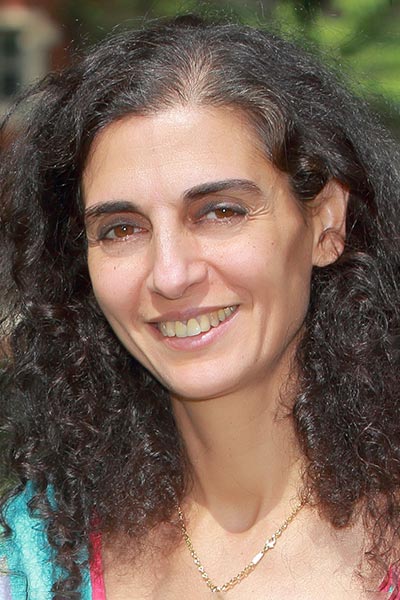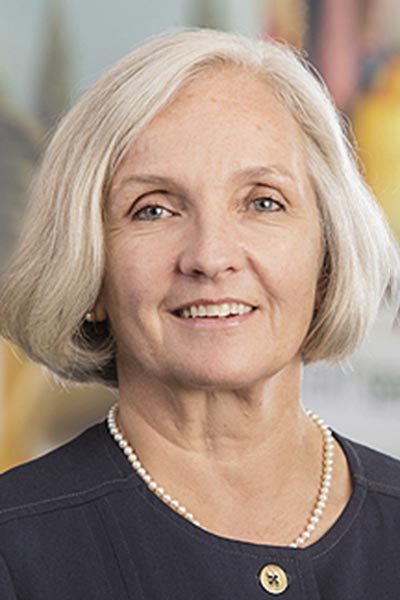Tumor molecular profiling promises to advance clinical care of pediatric cancer patients
The Cancer Genome Atlas program and continuing improvements in molecular profiling to identify actionable genetic alterations have brought dramatic changes to cancer therapy. Precision cancer medicine has been transformative for melanoma, non-small cell lung cancer, and acute myeloid leukemia (AML), among others, in adults. But the impact has been largely delayed in childhood cancers.

“There are potentially druggable events in about half of children with genomic abnormalities using targeted agents that are already approved,” said Gregory H. Reaman, MD, of the U.S. Food and Drug Administration’s Oncology Center of Excellence. “The evolving pediatric drug development regulatory landscape, not just in the U.S., is providing improved opportunities with more than 3,000 children enrolled in precision oncology trials. All of these trials collectively have provided a proof of concept of our ability to initiate appropriate targeted therapy in more than 50 percent of patients in studies with high overall response rates.”
Reaman co-chaired and delivered opening remarks in the major symposium Tumor Molecular Profiling of Cancers in Children: Expanding Research and International Collaboration to Advance Clinical Care. The session was originally presented Monday, April 11, and can be viewed on the virtual platform by registered meeting participants through July 13, 2022.
The reality, Reaman said, is that precision oncology continues to improve for pediatric patients, with more than a dozen molecularly targeted drugs approved for pediatric use in recent years. But not for all children.
Compared to adults, children have more disease-specific needs for different combinations of whole genome sequencing, whole exome sequencing, RNA-seq, targeted gene panels, and other molecular profile applications. Most children with cancer, about 80 percent, live outside Europe and North America in resource-restricted environments, and funding is not unlimited even in higher resource areas. New data-sharing platforms and new, more affordable technologies are needed globally.

“There have been 14 new glioma and glioneuronal tumor subtypes identified in recent years,” said Nada Jabado, MD, PhD, of McGill University in Montreal, Canada. “Targeted therapy, when it is done knowingly, works beautifully. The challenge is that we have so many entities and so many mixtures of fusions and point mutations. We must learn how to perform optimal molecular diagnoses and make the information available to treat patients.”
Precision Oncology for Young People (PROFYLE) is a Canada-wide project to improve outcomes for all childhood, adolescent, and young adult cancer patients with refractory, relapsed, or metastatic cancer using next-generation molecular tools to identify disease- and patient-specific biomarkers to improve clinical outcomes. Multiple sites are enrolled across Canada with parent and patient advocate groups included as essential nodes within the network. Active collaborations with multiple existing provincial and international initiatives are already changing diagnostic and treatment models, Jabado said.
About one in 40 patients enrolled has a new finding for which an approved therapy or clinical trial evidence already exists, she added. A quarter have a new finding for which there is a currently enrolling clinical trial or case report of efficacy. And more than half, 55 percent, of clinicians reported that molecular profiling findings have impacted clinical management.
“We need next-generation sequencing, we need to share data, and we need to work together,” Jabado said.

Survival is generally improving in pediatric oncology, but improvements are not uniform, added Gwen L. Nichols, MD, of the Leukemia & Lymphoma Society (LLS). AML survival rates lag behind survival rates for Hodgkin’s lymphoma, non-Hodgkin lymphoma, Wilms’ tumor, acute lymphocytic leukemia, sarcomas, neuroblastomas, and other childhood cancers.
“The developmental context of leukemia leads to very different molecular profiles between children and adults with acute leukemia,” she said. “The cause of AML in a six-year-old is very different than a 60-year-old.”
Adult leukemia skews toward small mutations that often involve a single nucleotide, she noted, while childhood leukemias skew toward larger, more catastrophic mutations and fusions. One result is that targeted agents that are effective in adults may have little to no impact in children.
FLT-3 agents are a cautionary tale. Five FLT-3 targeted therapies have been approved for adults and all have or had pediatric development plans. And while FLT-3 mutations are present in about 15 percent of pediatric AML patients, none of these agents are effective in or approved for pediatric AML.
Pediatric subgroups are often too small to yield meaningful results, Nichols added. Data are scattered across academic silos, especially in relapse. Inconsistent endpoints, targets, interventions, and data definitions make it difficult to pool data from recent trials or incorporate historical data.
LLS’s Precision Medicine for Pediatric Acute Leukemia (PedAL) is an international collaborative to speed drug development. Key features include: using common endpoints; a common data dictionary; a master trial framework that meets regulatory standards in U.S., European Union, and other jurisdictions; and consolidating and open-sourcing all prospective and retrospective data.
“We don’t even know what the targets are if we do not consolidate the data using common criteria and definitions,” Nichols said. “We need policies to encourage data consolidation and sharing to ensure progress.”
Another key barrier is getting molecular profiling to the 80 percent of children with cancer who live in low- and middle-income countries. Base technologies such as flow cytometry, fluorescence in situ hybridization, karyotyping, and molecular studies that clinicians in high-income countries take for granted do not exist in low-income countries.

“Childhood cancer is one of the largest diagnostic gaps in global health,” said Nickhill Bhakta, MD, MPH, of St. Jude Children’s Research Hospital. “Where a child is born and treated is the biggest prognostic factor to whether he will survive. The biology of the cancer is far less important than physical geography.”
Long-read gene expression profiling using nanopore technology (GEP) is one promising approach, he noted.
Long-read produces less accurate base pair calling compared to short-read methods, but long-read is far more affordable. Sequencers currently cost about $1,000 and materials cost $100 to $300 per patient. Shallow nanopore GEP can classify 96 percent of leukemia lineages and genotypes in AML and B-cell acute lymphoblastic leukemia, Bhakta said. The technique can also classify solid tumors using formalin-fixed paraffin-embedded samples.
The next step is to create a global pipeline that can deliver nanopore and other affordable, practical technologies to bedsides around the world, Bhakta said.
“Good ideas die all the time because no one thought about implementation,” he said. “You have to get it into the clinic in the real world if you want to make a difference.”
The National Cancer Institute (NCI) is trying to do just that with its Childhood Cancer Data Initiative (CCDI). CCDI is rolling out a new molecular characterization protocol focusing on soft-tissue sarcomas, which represent about 7 percent of all pediatric cancer cases.

Molecular diagnostics in soft-tissue sarcoma is challenging, said John F. Shern, MD, of the NCI. Genetic abnormalities in soft-tissue sarcomas range from relatively simple specific activating or inactivating mutations to highly complex and unstable changes that preclude the current generation of routine clinical genetic approaches.
Rhabdomyosarcoma risk stratification is a particular problem, he noted. More than half of rhabdomyosarcoma cases fall into a broad “intermediate” risk group. Applying the appropriate technology can help.
“TP53 mutations are a genomic marker of more aggressive disease,” said Shern, noting that patients whose tumors harbor TP53 mutations typically do worse, irrespective of clinical prognostic factors.
CCDI aims to kickstart molecular profiling for rhabdomyosarcoma with prospective national trials of TP53, MYOD1, CDK4, and MYCN mutations, and a new molecular characterization protocol. The national strategy builds on the Childhood Oncology Group’s Project:EveryChild to offer appropriate clinical and molecular characterization to every child with cancer.
CCDI has stable, 10-year funding to enroll about 3,000 patients, Shern said. The first rollout in low-risk rhabdomyosarcoma is currently open and enrolling.
European consortia are taking similar steps. The European MAPPYACTS trial, a prospective precision medicine trial to define the molecular profile of recurrent and refractory malignancies in pediatric and young adult patients, has moved molecular profiling to standard of care.

MAPPYACTS enrolled 774 patients in France, Ireland, Italy, and Spain between 2016 and 2020, reported Pablo Berlanga, MD, PhD, of Gustave Roussy hospital in Villejuif, France. Of patients with successful sequencing, 69 percent received at least one targeted treatment recommendation and 10 percent included agents considered ready for routine use. Overall response rates ranged from 17 percent to 38 percent, Berlanga reported.
MAPPYACTS 2, launching in 2022, will test molecular tumor boards, liquid biopsies, and health economics studies.
ESMART, a proof-of-concept study of molecular profiling in relapsed or refractory tumors in France, Italy, the Netherlands, Spain, and the United Kingdom, has enrolled nearly 200 patients since 2016.
“This is a long trial in which arms open and close as results mature and new questions come up,” Berlanga said. “And in France, the SACHA registry is collecting real-world evidence of innovative cancer therapies outside clinical trials. More than 90 percent of French cancer centers have enrolled patients since the registry opened in 2020.”
Another European trial, MICCHADO, is moving molecular profiling from recurrence back to initial diagnosis. The international trial has enrolled more than 400 patients since 2018 and has shown solid results, Berlanga said. Based on early results, molecular analysis has become standard of care for children and adolescents at cancer diagnosis. So far, 65 patients with a mix of neuroblastomas, leukemias, and brain tumors have been sequenced.
“We need to ensure that all patients have access to molecular profiling of their tumor and that the results are actionable,” Berlanga said. “It makes no sense to develop data if you don’t use it.”
Follow Along with the AACR Annual Meeting 2025
Keep up with the latest from the AACR Annual Meeting 2025, whether you are attending in person or virtually. Join the conversation on social media using the hashtag #AACR25 and read more coverage of upcoming sessions in AACR Annual Meeting News.

